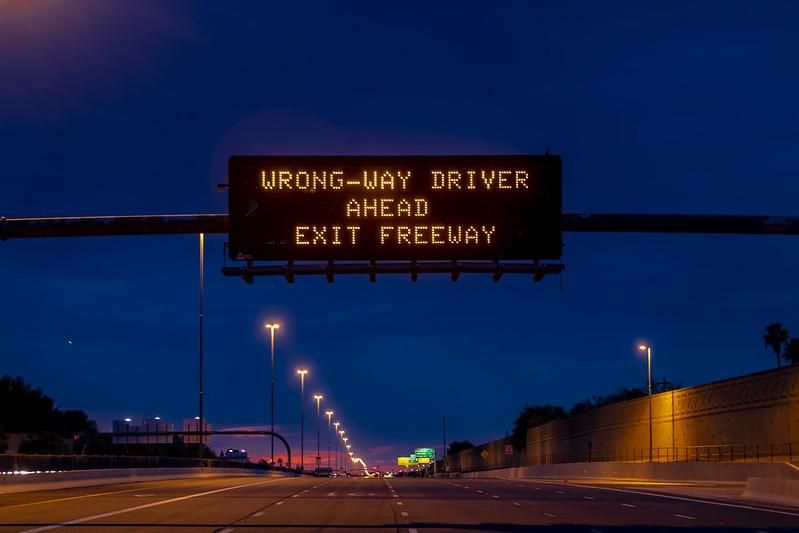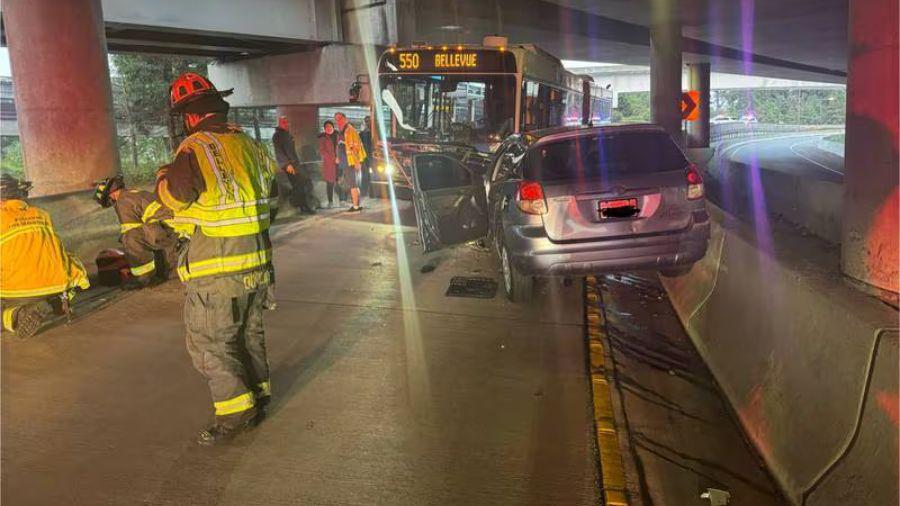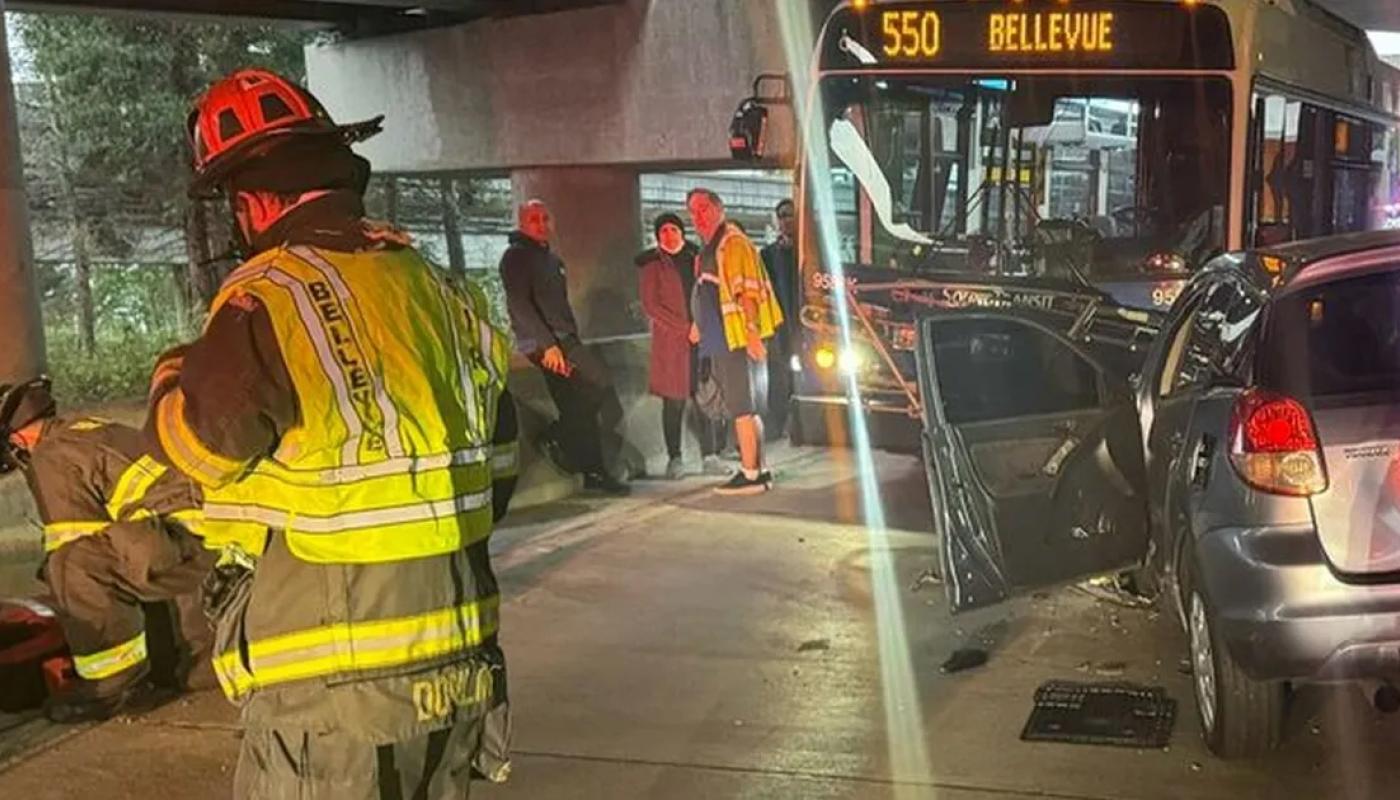When Routes Go Wrong: Engineering Challenges, SafePath™, and the Responsibility of Prevention
As urban areas expand and road networks become increasingly complex, wrong-way driving has emerged as a critical challenge for traffic engineers and city officials. The rise in these dangerous incidents, particularly in intricate metro areas like Bellevue, Washington, where a wrong-way driver recently collided with a transit bus, highlights the need for more advanced solutions. The question remains: who is responsible for preventing these tragedies, and how can technology like SafePath™ Advanced Wrong-Way Detection System play a role in addressing this growing concern?
The Engineering Challenge: Why Wrong-Way Driving Persists
Traffic engineers have long relied on physical infrastructure to guide drivers and prevent wrong-way entry. Medians, directional ramps, and signage are essential tools in creating a road network that directs traffic safely and efficiently. These measures are carefully designed, taking into account factors like road geometry, traffic flow, and driver behavior. However, as urban environments become more complex, these traditional methods are sometimes insufficient.
Complex Metro Areas: A Recent Event in Bellevue, Washington
In complex metro areas like Bellevue, where multiple highways, ramps, and urban streets converge, even the most well-designed roadways can be confusing. This confusion is often exacerbated by GPS systems that may not always provide accurate directions, particularly in areas with new construction or changes in road layout. The result is a higher likelihood of wrong-way driving, as was demonstrated in Bellevue when a driver, possibly confused by the intricate road network, collided with a transit bus.
The Limitations of Physical Infrastructure
While physical barriers like medians and directional signage are crucial in guiding traffic, they are not always enough. In areas with high traffic volumes, multiple entry points, and complex intersections, these methods can fall short. Drivers may misinterpret signs, be led astray by outdated GPS data, or simply make errors under stress or in poor visibility conditions. This is where the question arises: is it enough to rely solely on traditional engineering methods, or is there a need for more dynamic, adaptable solutions?
Introducing SafePath™: A Technological Solution for Modern Cities
In response to these challenges, TraffiCalm has partnered with AM Signal to develop the SafePath™ Advanced Wrong-Way Detection System. This system represents a significant advancement in traffic safety technology, offering real-time detection and alerts for wrong-way drivers. Unlike static physical barriers, SafePath™ is designed to be an active, intelligent system that can adapt to the ever-changing dynamics of modern road networks.
Key Features of SafePath™:
- Real-Time Detection: SafePath™ uses radar, thermal imaging, and other advanced sensors to detect wrong-way drivers as soon as they enter a restricted area. This immediate detection is critical in preventing accidents, as it allows for quick responses from traffic management centers and law enforcement.
- Instant Alerts: Upon detecting a wrong-way driver, SafePath™ triggers a series of alerts. These alerts can be sent to the driver, nearby motorists, and traffic management centers. The system can also activate visual warnings, such as flashing beacons, to immediately inform the wrong-way driver of their mistake.
- Smart City Integration: One of the most significant advantages of SafePath™ is its ability to integrate seamlessly with smart city infrastructure. As cities adopt more connected technologies, SafePath™ can provide real-time data sharing, automated responses, and integration with other traffic management systems. This makes it an ideal solution for cities looking to enhance their traffic safety measures in a comprehensive, future-proof manner.

The Debate: Who Calls The Shots on Wrong Way Prevention?
While SafePath™ offers a cutting-edge solution, the implementation of such systems raises important questions about responsibility. Traffic engineers, city officials, and law enforcement agencies all play crucial roles in preventing wrong-way driving, but who ultimately decides on the measures to be implemented? Who is responsible for ensuring that the most effective solutions are in place?
Traffic Engineers
Traffic engineers are at the forefront of designing roadways that are safe and efficient. They are responsible for studying traffic patterns, identifying high-risk areas, and recommending solutions. However, the implementation of these recommendations often depends on budgetary constraints and the priorities set by city officials. Engineers must also consider the balance between physical infrastructure and technological solutions like SafePath™. The question is, are engineers willing to embrace new technologies, or will they rely solely on traditional methods that may no longer be sufficient in modern urban environments?
City Officials and Law Enforcement
City officials, including mayors and city councils, are responsible for allocating resources and approving funding for traffic safety initiatives. Law enforcement agencies, on the other hand, are tasked with responding to incidents and enforcing traffic laws. The decision to implement advanced systems like SafePath™ often requires collaboration between these entities. However, differing priorities and limited budgets can lead to delays or compromises in adopting the best solutions. Who, then, is held accountable when a wrong-way incident occurs in an area where advanced systems could have prevented it?
The Future of Wrong-Way Prevention: A Balanced Approach
The debate over responsibility is not just about who decides; it’s about how these decisions are made. In the context of wrong-way driving, a comprehensive approach that combines physical infrastructure with advanced technological solutions like SafePath™ is essential. While barriers and signage will always have their place, they must be supplemented with intelligent systems that provide real-time detection and response capabilities.
Conclusion: Engineering the Roads of Tomorrow
The rise in wrong-way driving incidents, particularly in complex metro areas, underscores the need for a new approach to traffic safety. SafePath™ Advanced Wrong-Way Detection System offers a proactive, adaptable solution that can significantly reduce the risk of these dangerous events. However, the successful implementation of such systems requires collaboration, forward-thinking, and a willingness to embrace new technologies.
As the debate over responsibility continues, one thing is clear: the future of traffic safety lies in combining the best of traditional engineering with cutting-edge technology. By doing so, we can create road networks that are not only safer but also smarter and more resilient in the face of modern challenges.
For more information on how SafePath™ can be integrated into your city’s traffic management strategy, visit SafePath's website. Together, we can ensure that when routes go wrong, the right solutions are in place to set them right.

